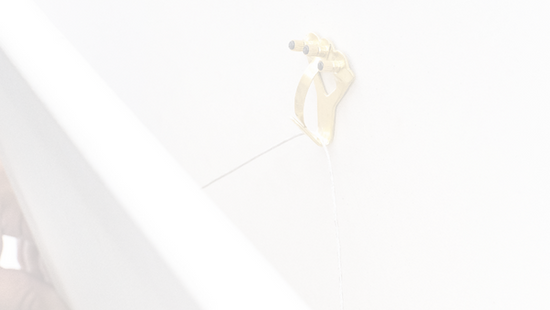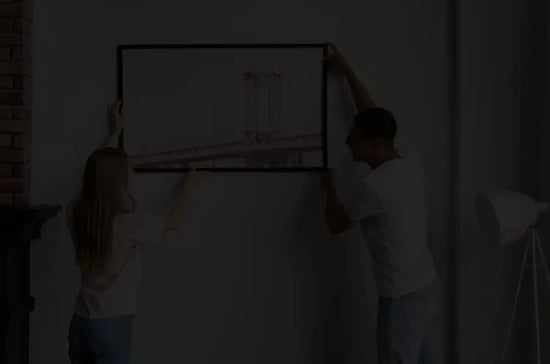It's funny how we take basic items for granted until we realize how much value they have when they help us complete a job! Picture hanging hooks are a perfect example of this.
Let's face it, wall hanging hooks aren't something you’d go shopping for. But once you've tried using them, you'll want to keep a stash of wall hooks on standby just in case.
After years working with wall hooks, we're glad to share everything you need to know about these picture hanging hooks —including why people need them, what to use them for, and a list of do’s and don'ts.
What Are Wall Hanging Hooks For?
Wall hooks help you hang up pictures and art pieces on the wall if you want to add more personality to your space. As simple as they are, wall hooks are pretty helpful. They’re versatile and robust despite their size.
What’s cool about them is that they come in many different types. There are traditional and specialty hooks that have different weight capacities.

To give you a little idea of what Picture Hang Solutions can offer, here’s a list of the type of wall hanging hooks we have:
Brick and Concrete Hooks
These are wall hooks that you can use on brick and concrete walls. Brick clips, steel utility hangers, and concrete wall hooks fall under this category.
Courtesy Hooks
These refer to traditional picture-hanging hooks that are packed inside a bag with a thank you note.
Why use these? Let’s say you’re an artist. When someone buys one of your paintings, you can include a courtesy hook to show your gratitude. This way, you’re building rapport while giving your clients the right picture hanger to use for hanging your painting.
Drywall Hooks
Like their name suggests, these are wall hanging hooks you can use on drywall. You can also use them on plaster and wood panel walls. Here, you’ll find brass hooks, tremor hooks, conventional hooks, steel utility hooks, and mega no-stud hooks.
Picture Rail Hooks
Picture Rail Hooks are part of a gallery system wherein pictures are hung on a nylon or steel cord suspended from the ceiling. We have rail hooks in white, silver, and brass finishes.
Speciality and Museum Hooks
Specialty and Museum Hooks are highly adjustable picture hangers tailored to fit professional settings.
RELATED ARTICLE: Everything You Need to Know About Wall Hooks
Traditional wall hooks have been the go-to picture hangers for so long because they are easy to work with. Just hammer them in and hang your frames. That’s it!
Speaking of installing wall hooks, you might want to check the tips in the next section to ensure a hassle-free picture hanging experience.
Do’s and Don’ts Worth Knowing
Wall hanging hooks have their fair share of do’s and don’ts to make picture hanging more seamless. We have learned these things while dealing with wall hooks all these years and getting some tips from fellow experts.
Here’s what you need to know:
✅ Do’s
Know the purpose of your hanging application.
Wall hooks have so many designs, innovations, and variants. Because of this, you have to consider several things like weight capacity, design, aesthetic, wall type compatibility, etc.
Depending on the purpose, you’ll need traditional picture hangers, utility hooks, or other decorative hooks.
Check your wall type.
Some hooks work on drywall, plaster wall, and wood panel walls. Other hooks work on concrete, brick, and masonry.
Make sure to factor your wall type in before buying your hook. While you’re at it, check the condition of your wall, too. Sometimes, picture hangers fail not because they’re weak or defective but because the wall was not in good condition.
Doing these will help you buy the right hook from the get-go.
Weigh the frames or objects first before hanging.
Always double-check if the wall hook you’re using can support the weight of your frame or object. Use a kitchen scale for small and lightweight things, and use a bathroom scale for oversized and heavy objects.

Plan before you hang.
Mark and measure before installing hooks on the wall. If you’re more of a visual person, it helps to make paper templates.
How to Make Paper Templates:
1. Trace your frames on paper.
2. Cut them to size.
3. Use painter’s tape to lay out your picture frames or artwork on the wall. If you don’t have one, lay them out on the floor instead.
Follow the nail guide sockets.
Hooks are fastened to the wall with nails, but they should be hammered gently into the wall at an angle to maximize their holding power. A lot of picture hangers have nail guide sockets for seamless use:
- Brass Hooks
- Tremor Hooks
- Conventional Hooks
- Adjustable J-Hooks
- Hook for Wall Buddies
- Hang Straight Hooks
Use bumpers at the bottom corners of your frame.
Bumpers protect wall surfaces from damage, help prevent slipping, and keep frames straight when hung. Using bumpers is an optional, but essential step if you want to keep your wall in pristine condition.
❎ Don’ts
Don’t install the hook on a weak wall.
As mentioned before, there are instances when picture hangers fail. When frames crash on the floor, it isn’t because the hanging hook is flawed but because the wall wasn’t strong enough.
Not checking the wall’s condition before installing the hook will lead to falling frames and damaged artwork.
Don’t over hammer the nails on the hooks.
Over hammering the nails may result in unwanted damages like bent nails and cracks on walls. When this happens, you compromise the hook’s holding power and your wall’s condition.
Don’t pry hooks away from the wall by using tools.
Pulling a hook from a wall may damage the surface, the hook, or the nail. To remove, use your fingers. Pull the nail out at the same angle it’s installed in with a slight twisting motion.

These may be straightforward tips and reminders, but sometimes it’s the simple things we tend to overlook. Keep all these do’s and don’ts in mind and you’ll be well on your way to hanging pictures and other objects successfully.
Final Thoughts
They say it’s always the little things that make a huge difference in our lives. Wall hanging hooks are simple but don't underestimate them. They come in handy when you want to liven up your walls.
So, what hanging hooks are you planning to buy? Let us know in the comments below!









Leave a comment (all fields required)